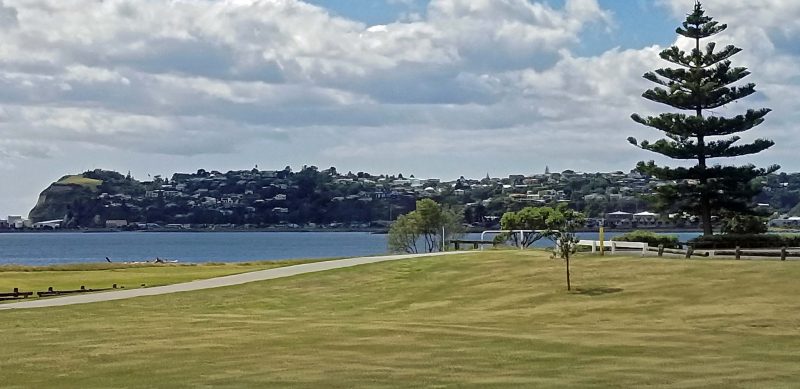Ted’s and my day started with a bus tour of Napier, NZ. Napier was greatly damaged by the 1931 earthquake. Every building in the business district collapsed, fires burned for 36 hours, the infrastructure was completely inoperable, etc., etc. As a result, much of the city needed to be rebuilt and so, it reflects the art deco architecture popular in the 1930s. These small houses (more like cottages in the U.S.) sell for $400,000-$500,000.
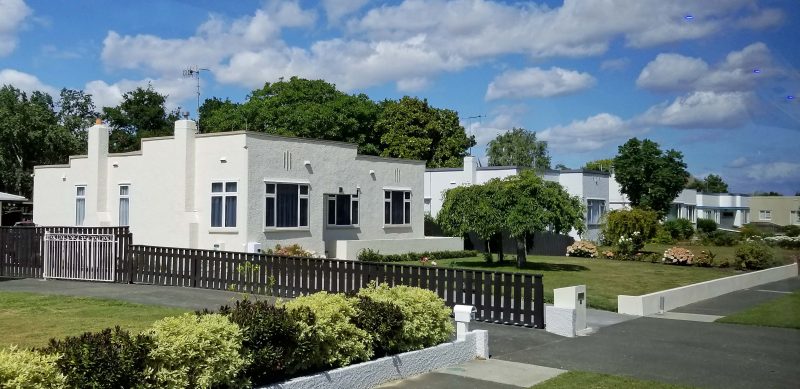
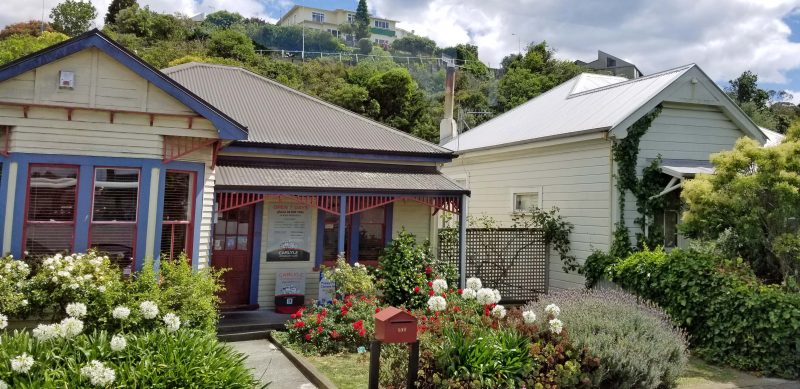
Notice how small the lawns are. They’re not any larger on the other sides of the houses, and much of the property is used for a small garden and automobile parking. I didn’t see any swing sets, swimming pools, or patios.
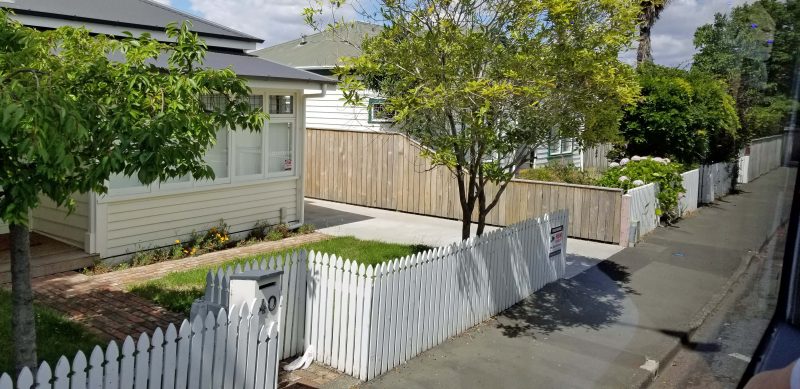
There are not many two-story houses in Napier because they are too expensive. The neighborhood in the picture below was described as “posh,” and these houses sell for about $1 million; if they have a pretty view, the price goes to at least $2 million. For all that money, they don’t have very much land either. Overnight street parking is not possible, so garages are often built in front of the houses, or cars are parked on the front lawns or beside the houses.
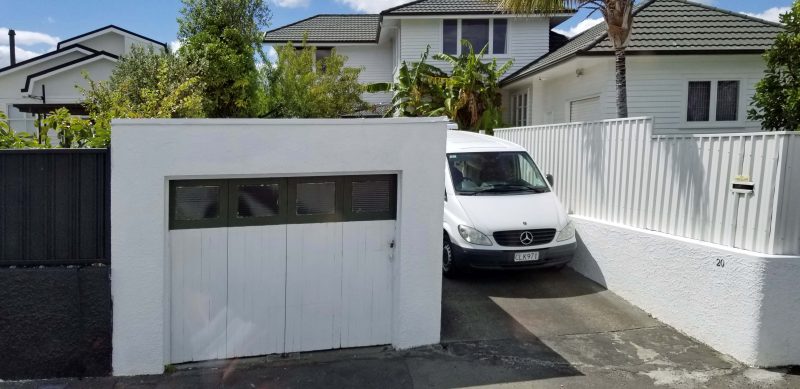
I’m amazed at the way housing is built on the mountainsides in NZ. Yesterday, we saw houses with nearly vertical funiculars to avoid climbing several hundred stairs from the street to the front door; today we saw a steep staircase with a lot more steps than I’d want to climb if I forgot something in the house or in the car. Ted and I have seen carports that are level with the front of the house and have support posts at least 40-50 feet tall on the opposite end. Photos don’t provide the depth of field needed to show how steep the hillsides behind these houses are, but notice that there are several levels of homes all the way to the top.
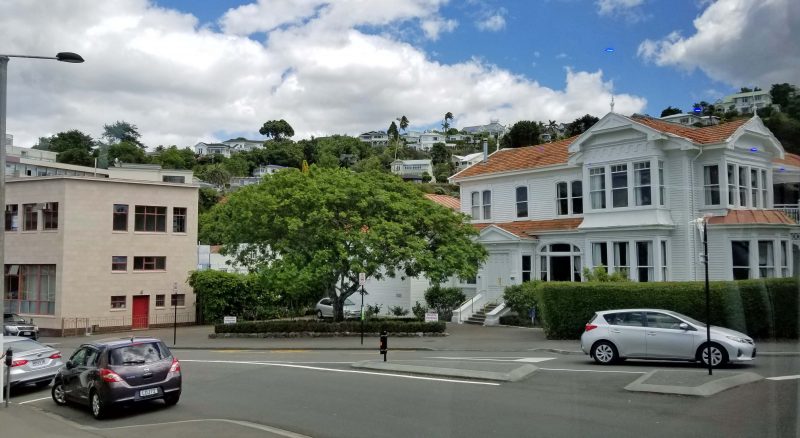
Moving on to the shoreline, Napier has a beautiful park that seems to extend for several miles. There are swimming pools (the ocean water is cold here), sports fields, playgrounds, gardens, sculptures, and more. The “junior bike track” part of the playground provides driving practice for young children. They can ride their bikes and learn to follow traffic lights, signs, etc. Our guide suggested the kids probably forget all of this when they get behind the wheel of a real car.
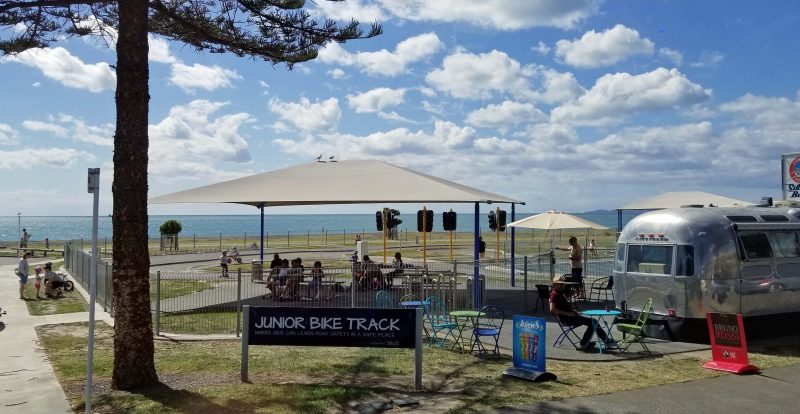
The first park sculpture below is “Freedom Lady” and honors the women who took care of everything on the home front while the men went to war. It also represents the strength of women. The second sculpture is called “Millenium.” Napier decided it was the first city in the world on which the sunrise could be seen on January 1, 2000, so the disc in this sculpture is placed directly above the spot at which the sun rose on that day.
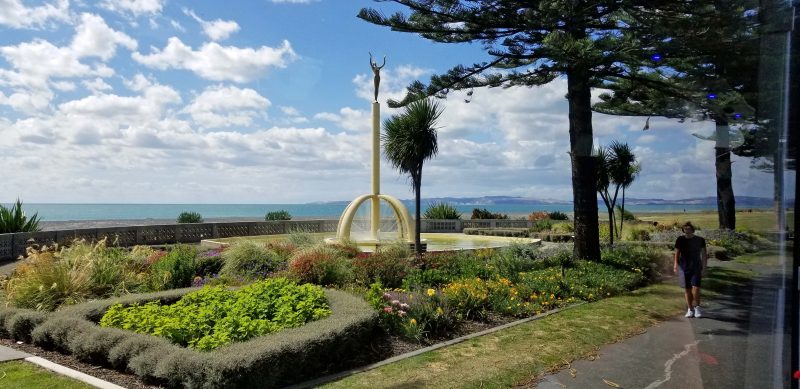

Other places in the park are simply beautiful. There were a lot of people biking on the bike trail, swimming in the pools, skating in the skate park, and playing on the playgrounds. I was surprised at the number of young children in the park on a Tuesday morning until our guide mentioned that the kids are on their summer break now and will go back to school later in January. Of course: summer break over Christmas in December and January, right?
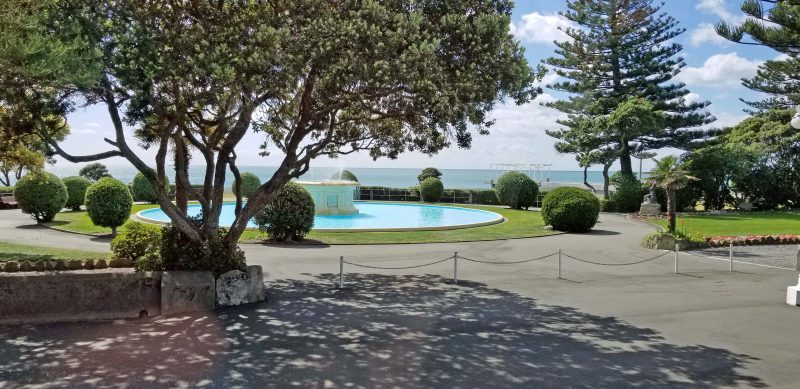
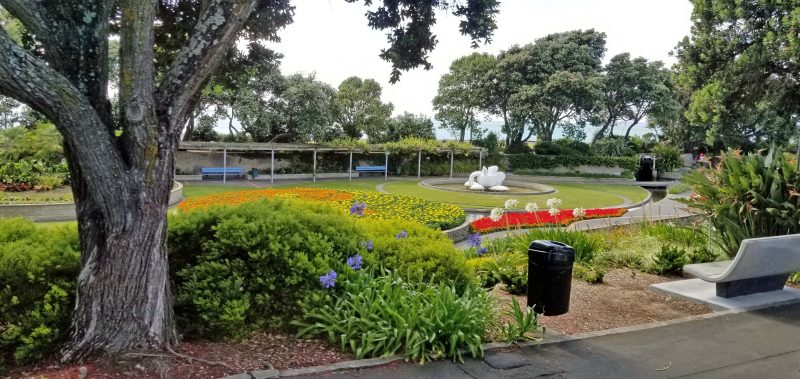
Napier has a temperate climate and can grow just about anything; however when an Englishman came to Napier and decided to grow tobacco, he built this city-block-size building before he discovered that tobacco might be the only thing that doesn’t grow well in Napier.

As we headed back to our ship, I had a pretty view of the city. You can see how steep the land is; you can see how the houses are built up the steep mountainsides; and you can get a good look at how the needles on the Norfolk (aka Cook) pine grow only upward and not in other directions on the branches.
